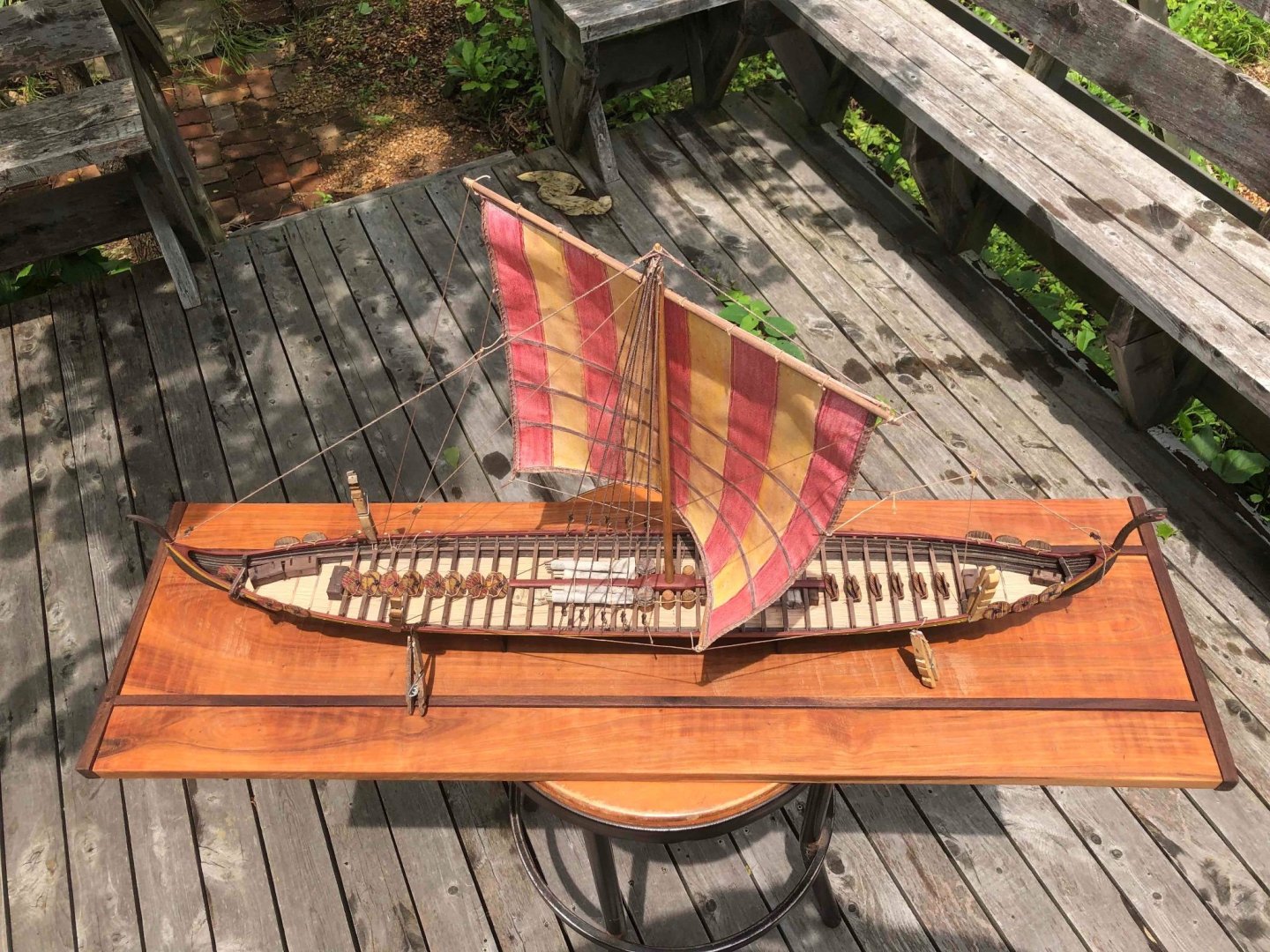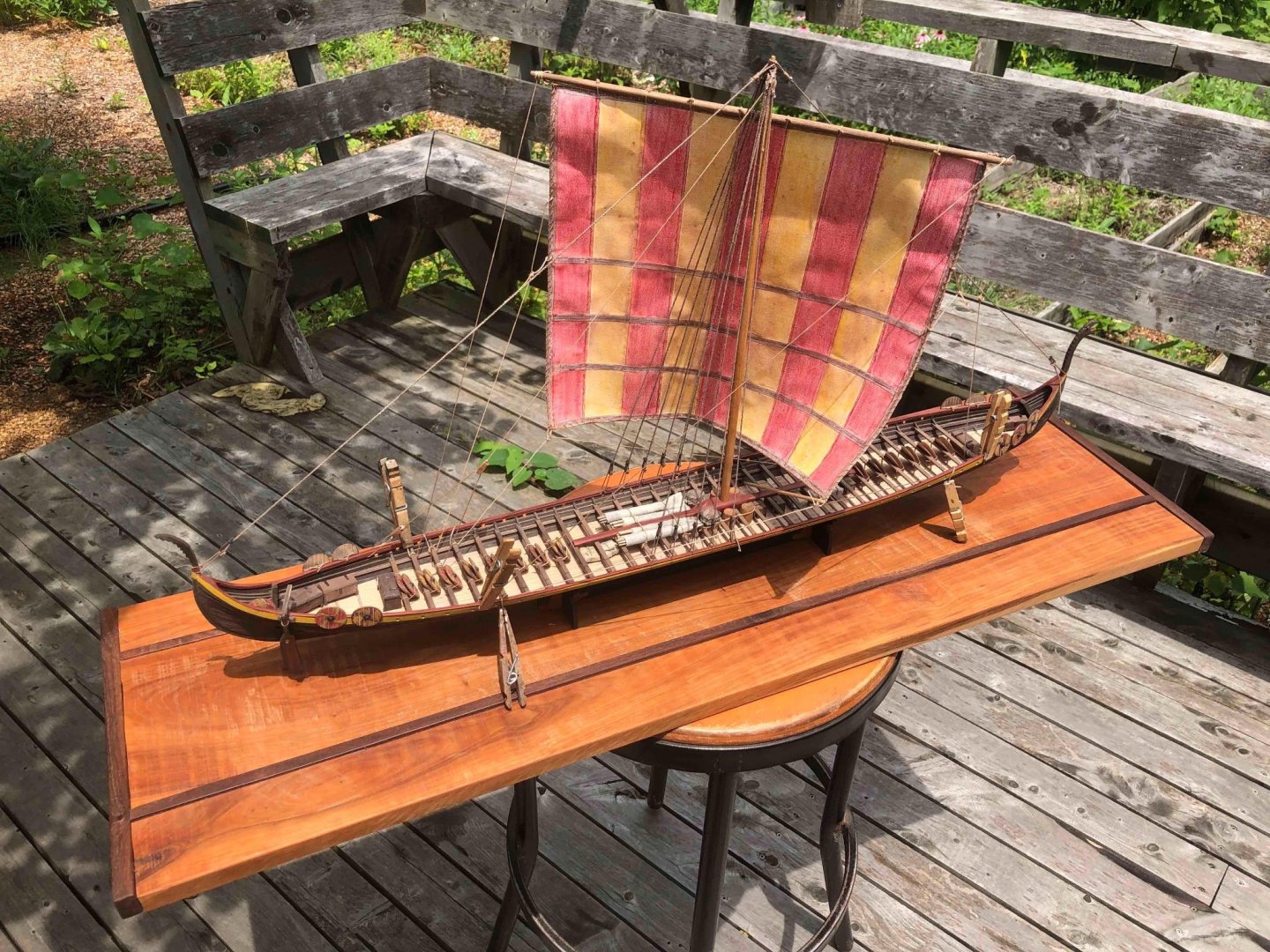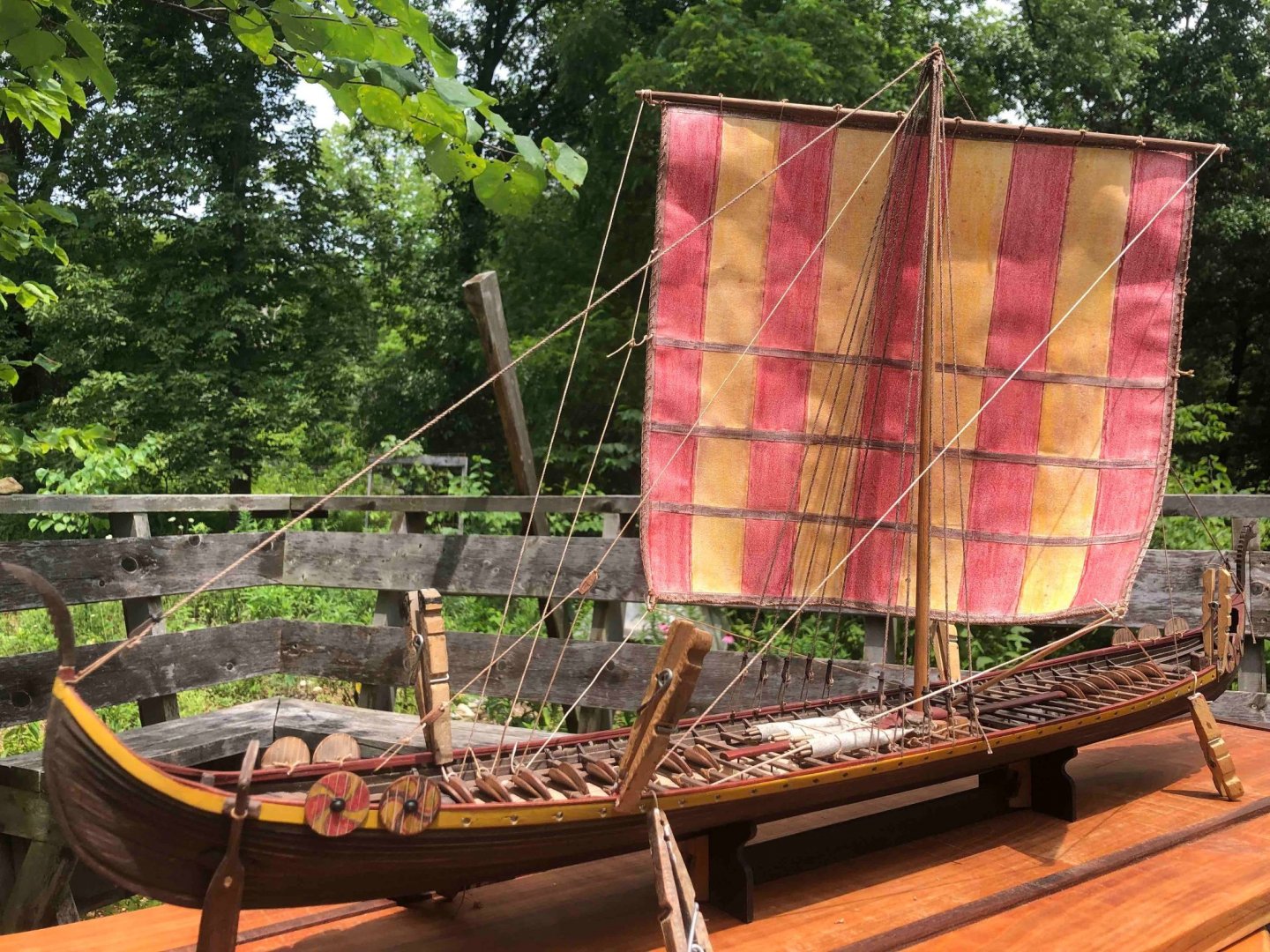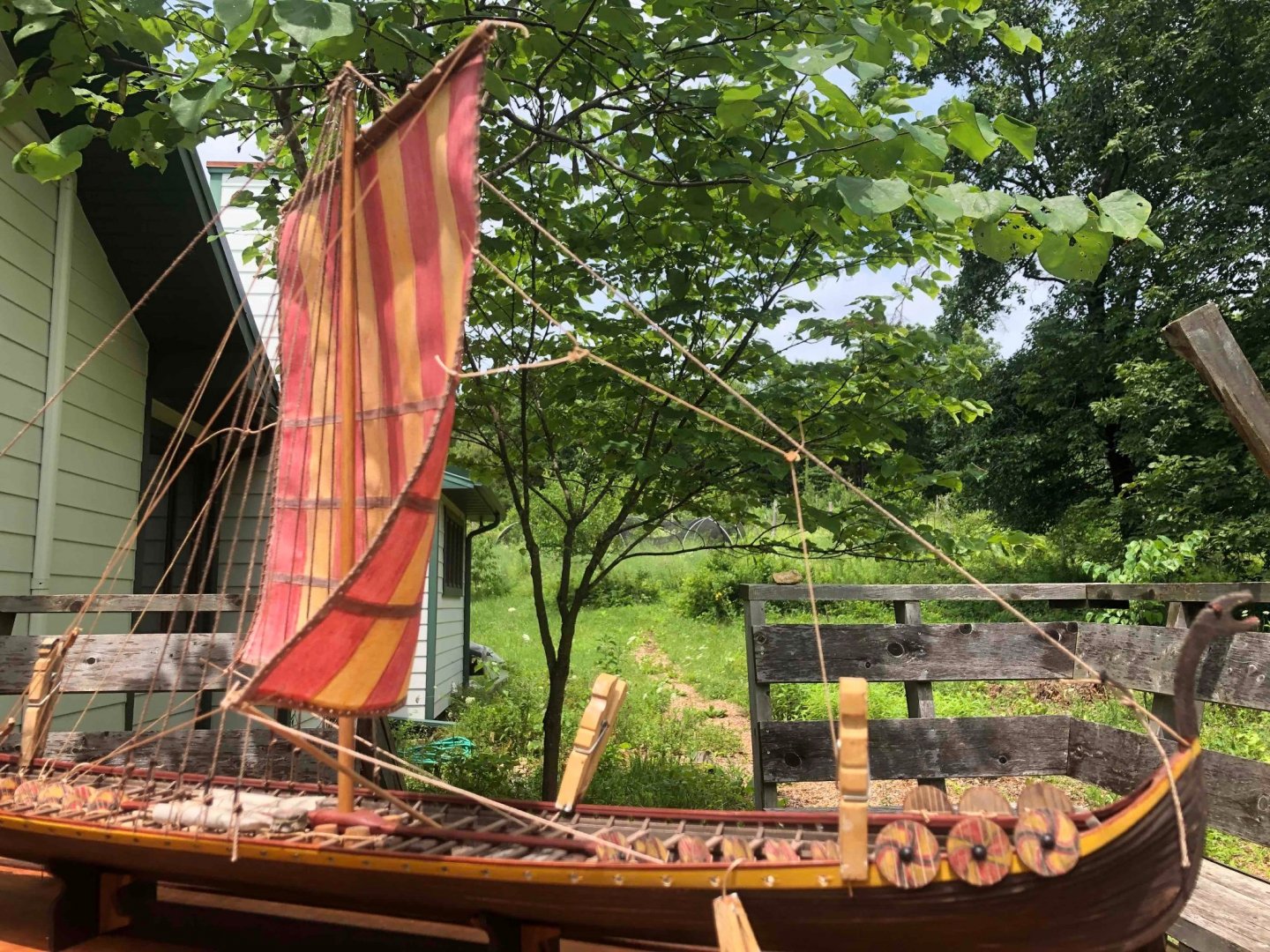-
Posts
3,479 -
Joined
-
Last visited
Content Type
Profiles
Forums
Gallery
Events
Everything posted by Cathead
-
Glad to see you're still carrying on! You have a nice balance of wood colors there.
- 86 replies
-
- king of the mississippi
- artesania latina
-
(and 2 more)
Tagged with:
-
Oh cool, this looks fascinating. I speak some German but probably not enough to be useful in translating maritime history. You've been a great influence in dragging my interests from obscure American riverboats to even more obscure ancient ships. This looks like a good extension to the rabbit hole. I admit I was rather startled to see "Winchelsea by Louie da Fly" and wondered what prompted such a drastic change in modeling period for you!
-
Wow, that looks great. You're definitely right about the paint bringing out the realistic look. Nice job on the texturing. I like the idea of a dark/rusty maroon, something that sets off the edge a little but doesn't highlight it. I found a detailed painting of the Cairo's interior on another modeling forum in a log for the BlueJacket kit. Not going to directly post it here as I'm not sure about copyright issues (not even sure if it's from the kit or some other source), but here's a link. It's a bit grainy, but appears to show gun rigging that looks fairly standard for naval cannons. If it is from the kit, I wonder if you could source a good copy directly from BlueJacket? If nothing else, I bet they'd be willing to discuss their own research used to develop that kit and maybe help you find new information?
-
In the Heart of the Sea is another good one by him. Your vessel and base go nicely together. I hope you enjoy your hiking trip.
-

NRG Capstan Project
Cathead replied to tlevine's topic in - Build logs for subjects built 1751 - 1800
Yes, please do, this is one of my next projects and I'd enjoy reading some third-party experiences. -
Very cool prototype and kit story, looking forward to this build. Roger, if I recall correctly, Nansen's Fram was built the same way (to move upward under ice pressure) as opposed to Shackleton's Endurance, which relied on brute force hull strength. Not sure if Fram was the first to do so or was following previous designs in that respect. I would assume the builders of the current vessel were aware of Fram and any of her predecessors.
- 127 replies
-
- Bowdoin
- Arctic Exploration
-
(and 3 more)
Tagged with:
-
None here, I've never used varnish so have no useful input.
- 109 replies
-
- Finished
- Artesania Latina
-
(and 1 more)
Tagged with:
-
My hands shake a bit, too, I've learned to balance my forearms or even wrists on something when doing delicate work. It makes a huge difference. Apologies if you're already doing that; it was a bit of a revelation to me.
- 114 replies
-
- Lady Nelson
- amati
-
(and 1 more)
Tagged with:
-
This is a fantastic exercise that everyone should engage in! You have a great perspective on thinking this through as part of becoming a better modeler.
- 109 replies
-
- Finished
- Artesania Latina
-
(and 1 more)
Tagged with:
-
Huh, I'd never experienced that. I've always used a very thin sheen of wood glue on the bottom side of such pieces, since they aren't under a lot of stress and it ensures glue doesn't squeeze out anywhere else. I can see how overloading the glue might have the effect you mention (and I certainly believe you given your experience). Just interested to hear of it because I hadn't run across that effect.
- 109 replies
-
- Finished
- Artesania Latina
-
(and 1 more)
Tagged with:
-

Permission to board from the Finger Lakes
Cathead replied to Freezing Parrot's topic in New member Introductions
Hey, just saw this introduction. I grew up in the Finger Lakes and never stop missing it. Enjoy it for me and welcome to MSW! -
Another way to look at it is that blackening most metal will improve the realism but leaving metal as brass can improve the artistry. There are some very nice models that leave all fittings brass, it's very attractive, just not as accurate. My take would be to choose one way or the other for the most part (for example, as noted above, bells remain brass even if other metal is iron). Haphazard mixing (like blackened rudder hardware but brass chainplates) may look inconsistent or even silly.
- 160 replies
-
- Model Shipways
- norwegian sailing pram
-
(and 1 more)
Tagged with:
-
Just read through your log so far, great work to this point. You're really doing a nice job learning how to do things and asking the right questions. I can't wait (ok, I can) to see how this turns out.
- 114 replies
-
- Lady Nelson
- amati
-
(and 1 more)
Tagged with:
-
I agree, I don't know why they would suggest that when PVA is so much cleaner and easier to use. May be a translation issue, foreign kits are notorious for poor English. Thanks for the kind words! Lots of people find this kit to be a good entry point and it produces an attractive display piece even if it isn't particularly accurate (which isn't necessarily important). If you enjoy it and want to dive deeper, I strongly recommend Model Expo's Chaperon kit, which is the only accurate wood riverboat kit I know of. Strongly agree on Twain, and one I never get tired of rereading.
- 109 replies
-
- Finished
- Artesania Latina
-
(and 1 more)
Tagged with:
-
Personally I would use regular wood glue for all wood-wood contact. Makes a very secure and stable bond, and dries at the right rate (slow enough to allow you to set the joint, fast enough that you're not waiting days). I agree that choppers like that are wonderfully handy.
- 109 replies
-
- Finished
- Artesania Latina
-
(and 1 more)
Tagged with:
-
Enter! At worst it's a learning experience. I won silver with Arabia in the Wisconsin contest despite my photos being not all that great (wrinkled sheet behind the model and everything).
-
Mark, I believe the problem is that known hulls show no signs of ever having had figureheads, removable or otherwise (Steven can correct me if I'm wrong). If there was a clear socket for one, or a clearly hacked-off stempost, we might at least confirm that we were used. But as I understand it they're only known at all from literature and later artistic renderings.
-
Have fun! I’m near the end of the larger version of this, took me over a year rather than the few months I expected, but much of that was my own fault. I had some trouble with various aspects of mine but the smaller version may be easier. Looking forward to what you do with it!
- 6 replies
-
- Dusek
- Viking Longship
-
(and 1 more)
Tagged with:
-
Finished the rigging, which wasn't overly complicated. I just followed the kit's instructions. There's probably a more complex and accurate way to do it, and I temporarily studied some photos of the reproduction, but had a really hard time following the lines. What's shown here at least makes basic operational sense to me. Note the beitass holding the windward corner of the sail (the pole wedged into the leeward hull and extending up to the sail). Balaclutha75's drakkar log has some good discussion and imagery of how this might have functioned, especially the lovely National Geographic artwork linked in this post. That image also shows a few shields lashed along the bow gunwale, forward of the oars, just like I decided to do. Don't know if that's coincidental or if I subconsciously remembered that when working out my shield arrangement. It also shows shields stashed below the deck, which I can always used as an excuse for my missing 20 shields, even though I dismissed that as an overall solution earlier. Nothing is glued in yet (hence the clamps in the photos below), so I'm curious if anyone has specific arguments for how/why I should change anything (within reason). You'll also notice that I installed my figureheads. I realize these are still somewhat controversial as literary and archeological sources don't line up. But as someone who loves the Icelandic sagas and other literature from the period, I'm fine with hinting at that style of ship-building. Artist's license. Looks like I got the focus a bit off on this last one, but don't feel like retaking it as the ship is already back inside. It gets the point across regarding rigging setup. Once I'm comfortable with the rigging, all I have to do is add the oars back in and I'm done. Then it's time for some proper photography. Please let me know what you think of this rigging setup (especially if you think any changes should be made), so I can move toward completion! Thanks so much.
-
I've never used pins myself but I'd have to assume the idea is to draw them again once the glue dries. Or you could use a pair of flush cutters to nip off the heads, leaving the shaft of the pin in for strength.
- 109 replies
-
- Finished
- Artesania Latina
-
(and 1 more)
Tagged with:
-
Honestly, the sort of high-end machinery shown there is primarily used in managed tree plantations. It only really works with high-density uniform stands, not the sort of gnarly, diverse stands you get in "natural" woods, and these are usually replanted. Globally, deforestation (as in the permanent removal of natural trees) is driven by more brute-force methods (chainsaws, bulldozers, etc.) in places that can't afford the sort of machinery shown in the video. Tree farms like that still aren't great, because they lead to major soil, biodiversity, and habitat loss, as well as often using copious amounts of helicopter-applied herbicide to suppress unwanted regrowth until the next round of farmed seedlings are planted. But they aren't really "deforestation" once their cycle gets started. For example, here in Missouri, it's common to see woods being bulldozed to make room for more corn planting (the government pays for corn, not for trees). Acres at a time just bulldozed into a huge pile, burned, most of the topsoil stripped off to get rid of the stumps, then plowed for crops. But that's just dudes with bulldozers and matches. Same thing happens in the Amazon at a much larger scale.
About us
Modelshipworld - Advancing Ship Modeling through Research
SSL Secured
Your security is important for us so this Website is SSL-Secured
NRG Mailing Address
Nautical Research Guild
237 South Lincoln Street
Westmont IL, 60559-1917
Model Ship World ® and the MSW logo are Registered Trademarks, and belong to the Nautical Research Guild (United States Patent and Trademark Office: No. 6,929,264 & No. 6,929,274, registered Dec. 20, 2022)
Helpful Links
About the NRG
If you enjoy building ship models that are historically accurate as well as beautiful, then The Nautical Research Guild (NRG) is just right for you.
The Guild is a non-profit educational organization whose mission is to “Advance Ship Modeling Through Research”. We provide support to our members in their efforts to raise the quality of their model ships.
The Nautical Research Guild has published our world-renowned quarterly magazine, The Nautical Research Journal, since 1955. The pages of the Journal are full of articles by accomplished ship modelers who show you how they create those exquisite details on their models, and by maritime historians who show you the correct details to build. The Journal is available in both print and digital editions. Go to the NRG web site (www.thenrg.org) to download a complimentary digital copy of the Journal. The NRG also publishes plan sets, books and compilations of back issues of the Journal and the former Ships in Scale and Model Ship Builder magazines.








